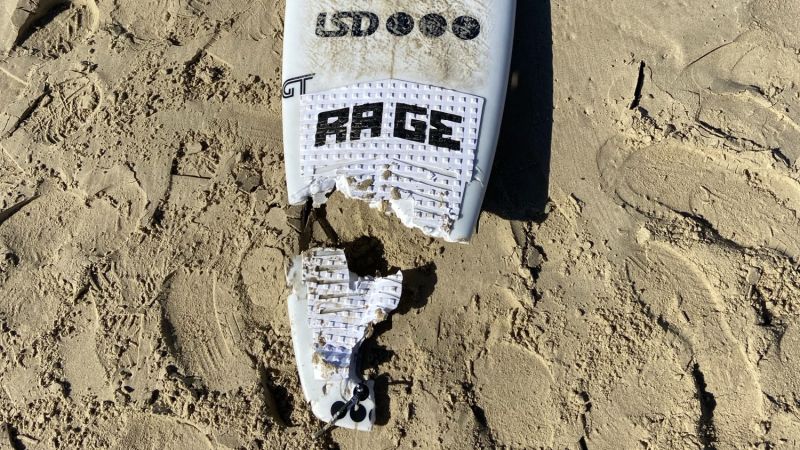In a chilling tale that evokes a sense of horror and fascination in equal parts, an unfortunate incident has created ripples across the surfing community worldwide. This narrative revolves around a gruesome discovery off the coast, a shocking reminder of the potential dangers lurking within the depths of our seemingly tranquil oceans—a surfer’s leg that reportedly washed up on shore post a fatal shark attack.
The ocean, that vast expanse of blue that uplifts spirits and kindles imagination, is also home to a dense network of marine life, including creatures like sharks – magnificent yet sometimes menacing. Although turning into a shark’s prey is probably the last thing on a surfer’s mind before hitting the waves, it remains an enduring and grim possibility.
On this fateful day, the sun was gleaming, the waves seemed inviting, and a group of eager surfers was unwinding at one of the most popular local surfing spots. Everything was ordinary until one of the surfers reported missing after a massive wave flipped him. What followed next was the stuff nightmares are made of—a remnant of the surfer, his severed leg, washed ashore, stark testimony to the surfers’ worst fears of a calamitous shark attack.
Law enforcement and the marine conservation department mobilized swiftly when the grim findings were reported. Meanwhile, the shock resonated through the closely-knit surfing community that had gathered on the shore. Questions began to arise. How common are shark encounters? Are certain regions more vulnerable? And, importantly, what measures can surfers and authorities take to prevent such incidents?
Incidents of shark attacks are indeed rare, but not unheard of. While countless people swim and surf in the ocean every day without harm, occasional reports of encounters, sometimes even fatal, with sharks cannot be completely overlooked. Of the wide array of shark species that inhabit the world’s oceans, only a handful are considered dangerous to humans.
Certain geographical areas such as parts of Australia, the United States (particularly Florida and California), and South Africa observe a relatively higher frequency of shark-human encounters. Warm waters, an abundance of smaller prey species, and human intrusion into shark habitats increase the likelihood of such confrontations.
It’s crucial to note that fatal encounters like this one remain exceedingly rare. However, the surfing community, local marine organizations, and authorities can work cooperatively to further minimize risks. It may involve investing in shark deterrent devices or technology, assistance from shark spotters, or providing public education about the areas and times when sharks are most likely to be present.
The tragic event, though deeply unsettling, serves as an urgent reminder to all sea lovers about the importance of understanding marine life better. Reducing human interference or disruption in shark habitats, signing up for related education programs, and respecting marine life habitats can be part of the solution to avoid similar tragic encounters.
While we mourn the unfortunate demise of the surfer, this incident is a wake-up call – a call to acknowledge the dangers that come with the thrill of surfing, a call to remain vigilant, and a call to embrace sustainable surfing norms. The ocean, at the end of the day, is a wild wilderness, and everyone venturing into it should be aware of the countless mysteries it beholds in its depths.




